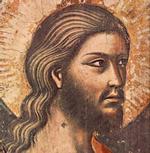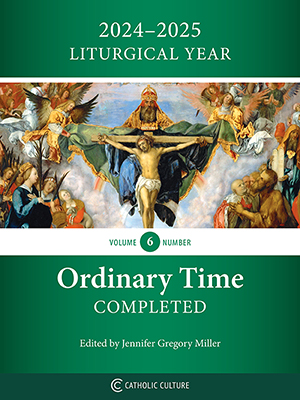Jubilation in Rome’s Eternity
By David G. Bonagura, Jr. ( bio - articles - email ) | Apr 21, 2025
By God’s grace, human beings are born into eternity: even after death, we live. The same can be said of Rome, which today, April 21, celebrates its 2,778th birthday in the midst of Paschal joy and Jubilee Year festivities. Surpassing men, Rome has died multiple deaths yet still lives. The poet Tibullus dubbed Rome the “eternal city” as Augustus assumed the mantle of first emperor, and Virgil, their contemporary, sung that the gods had blessed her with “power without end.” Millennia later, pilgrims seek a Roman majesty that comes not from the gods, but from God who willed that the blood of this city’s martyrs be the foundation of His Church on earth.
It’s difficult not to credit Providence for Rome’s rise from riverside bungalow to world master. “Romulus had not yet formed the walls of the eternal city,” wrote Tibullus about the mythic year 753 BC, “but then cows were grazing in the grassy Palatine and modest huts stood on [the future] citadel of Jupiter.” Through military prowess, cunning politics, and dogged determination, this tiny town, whose government morphed over time from monarchy to republic to empire, expanded to dominate first the Italian peninsula, then the entire Mediterranean world for centuries.
Finally, in the fifth century AD, Rome’s empire ceased after Vandals and Goths conquered her. In the ensuing centuries, the city entered a Dark Age: her population dwindled, her once-glorious buildings collapsed and were buried. What did not die was the Catholic faith that planted the cross in Rome as its flag and established the pope as her ruler. This faith, always cognizant that its secular predecessor had tried to destroy it, never sought dialogue nor rapprochement with pagan Rome. As if it had learned from the emperors, Catholicism conquered Rome and declared Christ’s power would rule without end.
Marks of Catholicism’s victory adorn the city today. St. Peter sits on top of Trajan’s column. The Pantheon is now a basilica dedicated to the Blessed Mother. Most of the city’s thirteen obelisks, eight from Egypt and five from the ancient city, feature crosses on top and inscriptions of popes on their bases. A large inscription on the Colosseum, a Jubilee year product, declares how even this building fell to the faith:
The Flavian Amphitheater, famous from triumphs and spectacles, and dedicated to the gods of the nations in a wicked cult, was expiated from impure superstition by the blood of martyrs. Lest memory of their bravery perish, Pope Benedict XIV, in the Jubilee Year 1750, the tenth of his pontificate, has provided that this monument be restored to marble, which, painted on whitewashed walls by Pope Clement X in the Jubilee Year 1675, had been ruined by the damages of time.
Time has marched on, Rome has endured, yet it seems that pagan Rome has had its own resurrection in recent decades. Few native Romans attend Mass on Sundays. The major basilicas see more gawkers than adorers. Vatican Museum tour guides, almost to a person, showcase secular art while ignoring the sacred: Among other examples, there is only one painting they discuss when entering the Raphael rooms—the School of Athens. The Disputation on the Eucharist, intentionally painted in the same style and situated directly across from the philosophers, is never mentioned. Where a Renaissance master had intentionally paired faith and reason, today’s pagan Rome ignores the former for exclusive focus on the latter.
Jubilee Year pilgrims rebalance the tension between sacred and secular. From the first Jubilee through today, the grand prize remains a plenary indulgence, the removal of all punishment due for sin in Purgatory. This reward means nothing to tourists who have no faith. But for pilgrims, the Jubilee marks a city not merely of ancient grandeur and imperial power, but of faith in the God of love.
Enticing antiquity, both secular and sacred, keeps Rome’s eternal flame burning. Shortly after Pope Boniface declared the first Jubilee, the humanist Petrarch led the charge for a Renaissance, a rebirth of classical learning. Four centuries later, Edward Gibbon looked down on Rome’s ruins and felt inspired to write the history of the city’s decline and fall. 150 years more, another Englishman, Christopher Dawson, would stand at the same spot and find inspiration to write a history of culture. In between, Lord Byron would write: “Oh Rome! my country! city of the soul! / The orphans of the heart must turn to thee, / Lone mother of dead empires!”
The allure of the sacred antiquity runs as deep. In the late fourth century, St. Jerome and his friends spent their Sundays visiting the tombs of the apostles and martyrs. Now in the twenty-first century, tickets for the scavi tour, the ancient burial ground beneath St. Peter’s Basilica that contains Peter’s bones, are some of the city’s most difficult to obtain. Visitors can descend three levels of history in the Basilica of San Clemente, a twelfth century church built on top of its fourth century predecessor, which itself is built on a second century home. The Capuchin Crypt, a series of chapels beneath Santa Maria della Concezione dei Cappuccini that are lined with bones and skulls of thousands of dead friars who lived centuries ago, offers an eerie reminder of human mortality.
To celebrate Rome today is to toast its secular and sacred histories for all their respective glories, respective failures, and the many conflicts between them. To do so in this Jubilee Year is to rejoice in the enduring power of the divine over finite secular might. Hildebert of Lavardin (c.1055-1133), Archbishop of Tours, in a poem where personified Rome is the first-person narrator, imaginatively captured this mystery:
The flag of the cross gave more than military standards, Peter gave more than Caesar, the unarmed crowd gave more than all military leaders….
Which Caesar with his sword, which consul with his care, which orator with his tongue, which military camp with my own hand gave me such great things? I obtained lands by their zeal and laws. One cross gave me Heaven.
All comments are moderated. To lighten our editing burden, only current donors are allowed to Sound Off. If you are a current donor, log in to see the comment form; otherwise please support our work, and Sound Off!








